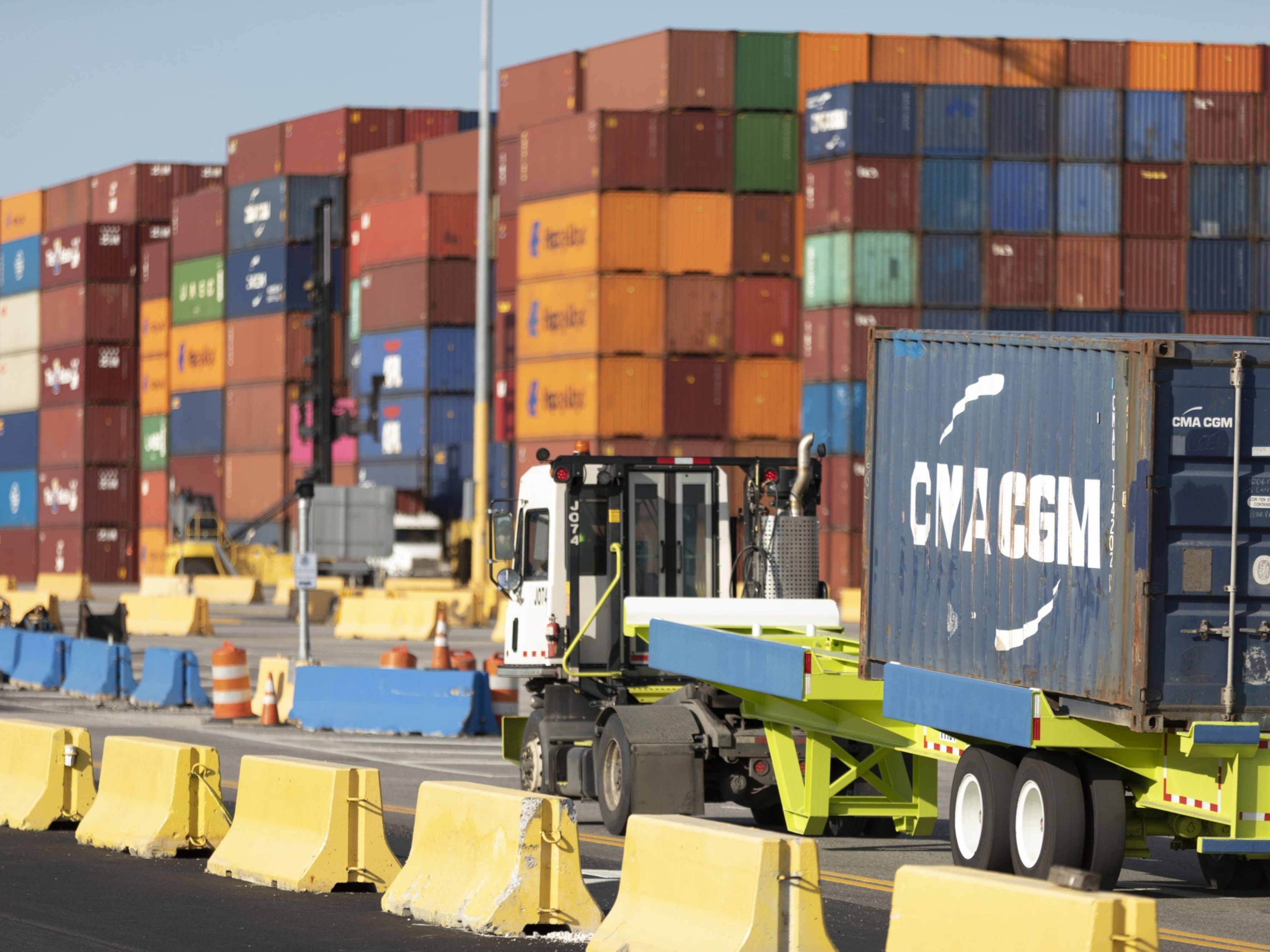
Logistics experts are busy considering ways in which their supply chains can be redesigned so as to avoid the kind of congestion that has brought international goods movement to a virtual halt at major ports. That could take years to bring about, but in the meantime, the system is crying out for some form of immediate relief.
The solution can be summed up in one word: space. Thousands of import containers coming off ships at U.S. ports need a place to go. They can’t stay on the docks; the ports of Los Angeles and Long Beach have threatened to impose a dwell fee on boxes remaining in marine terminals for more than a few days. And railyards and warehouses are similarly operating at capacity. So somewhere in the supply chain, room must be made.
The answer, at least for now, lies in the creation of “pop-up” container yards — land that’s currently sitting unused and can accommodate the stacks of boxes that are waiting for the path to final destination to clear. One such program is underway at the Port of Savannah, which is making use of nearby yard space provided by the Norfolk Southern and CSX railways. The latter’s yard in Atlanta will be able to handle volumes of up to 1,200 containers per month, according to the Georgia Ports Authority.
On the West Coast, where the current congestion crisis began, California Governor Gavin Newsom has ordered state agencies to find properties that could be used for temporary container storage. A competitive bid went out in January of this year, and the winner was Chunker, a provider of short-term warehouse space in California.
The process was surprisingly smooth, according to Chunker chief executive officer Brad Wright. “Nothing really happens that fast when it comes to government,” he says. But it did this time. Chunker was awarded two-year leases for six properties that will accommodate overflow volumes from the ports of Los Angeles, Long Beach and Oakland. The company was looking to begin storing boxes there around the first of April.
Two of the parcels are state fairgrounds, portions of which haven’t been used for years, says Wright. They include vacant land in the high desert city of Lancaster. In Stockton, Chunker is taking over some 66 acres that used to be a horse racing track. Three other sites are National Guard armories.
Preparing the properties for containers entails more than putting up a fence or unlocking a gate. They need to be equipped with cranes and mobile offices, and Chunker must obtain the necessary permits and business licenses. Security will also be a major concern. As of mid-March, the company was on track with its timetable for making the facilities fully operational. In fact, says Wright, it had begun the process even before winning the leases, “hoping that we would get it.”
On site, containers will be grounded and stacked, to maximize use of the land. Some chassis might also be stored there, but the emphasis will be on housing the boxes, Wright says. Together, he adds, the six Chunker-managed sites will be able to store up to 30,000 containers. Decisions on where they will actually go are up to ocean shipping lines, third-party logistics providers, freight forwarders and in some cases cargo owners.
For shippers, creation of the overflow yards generates yet another charge for moving cargo through a system that’s becoming increasingly expensive to navigate. But until volumes begin to decline, possibly due to an abatement of COVID-19 and its many variants, they have little choice but to shoulder the additional cost.
In the months ahead, shippers and cargo handlers will continue to seek new locations for storing and processing containers and trailers. Some are turning to shuttered stores and malls that can be repurposed as distribution centers, in areas close to demanding online shoppers. But a long-term solution to the congestion crisis requires a far broader effort that addresses all nodes and modes of transportation, from marine terminals to intermodal railyards, trucking operations and warehouses that deploy sophisticated automation systems.
Wright suggests that the pop-up concept might not prove as “temporary” as planned. Freight handlers could find themselves getting comfortable with the solution. “We initially went into it assuming that it was going be short-term,” he says. “But all said, once you get rolling and get into the workflow, this could go on forever.”







